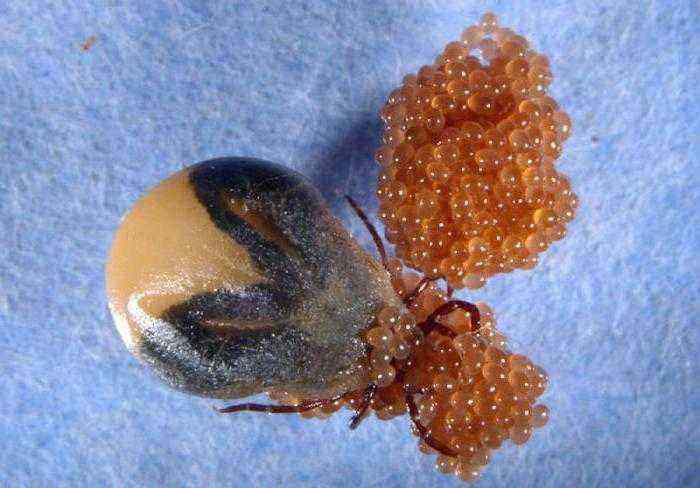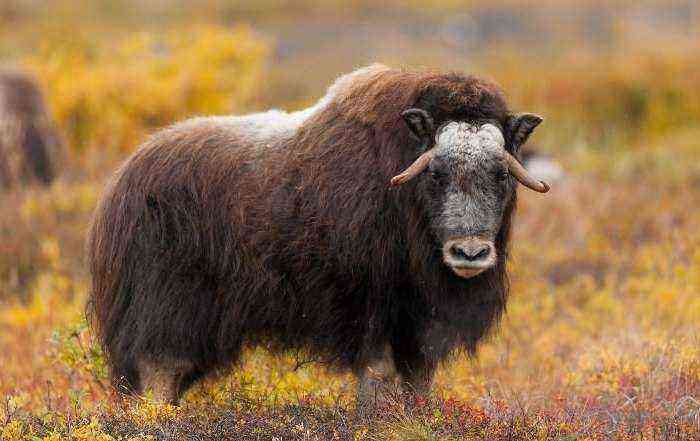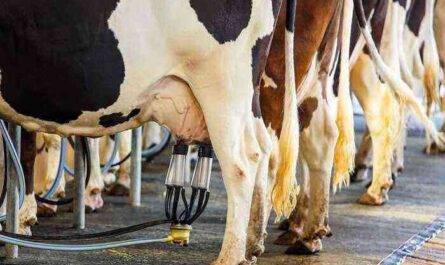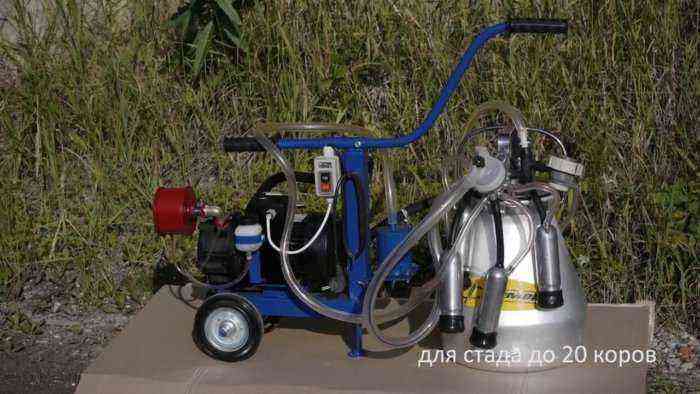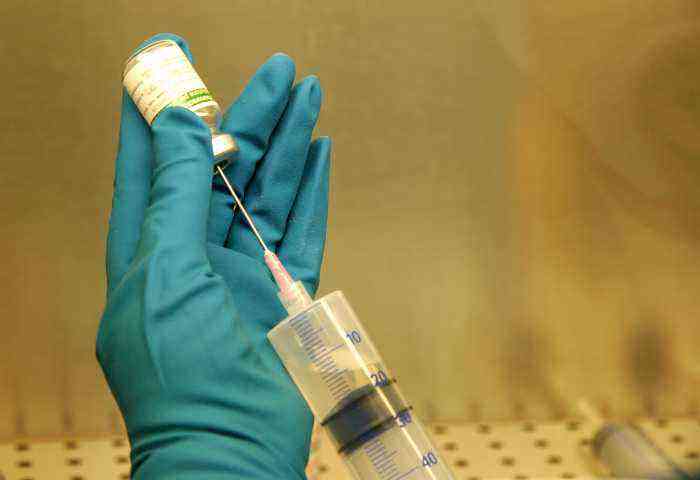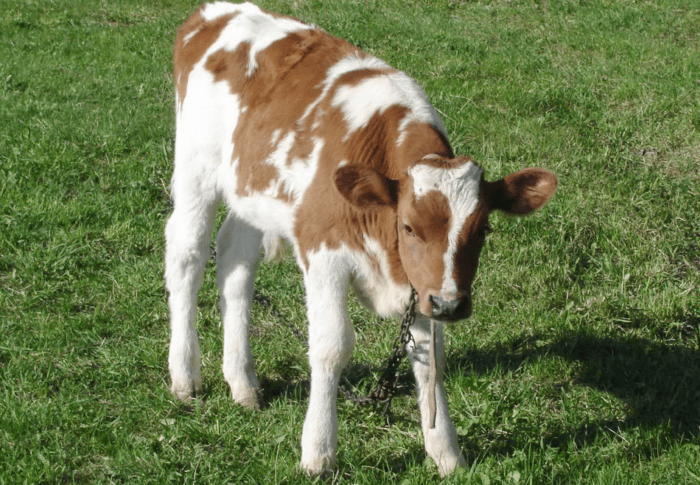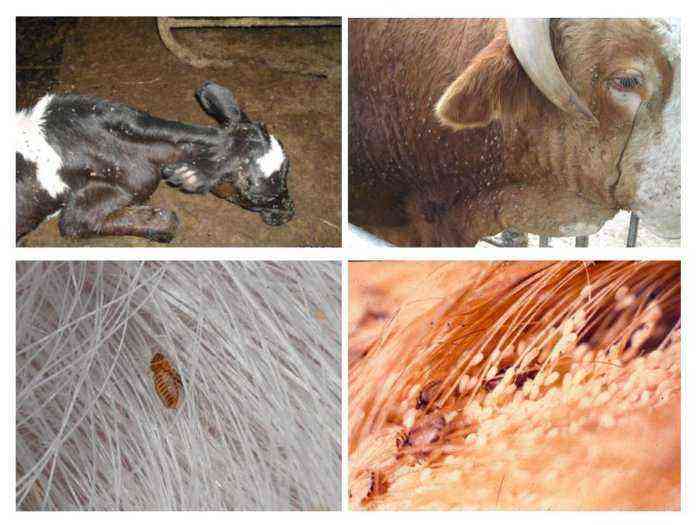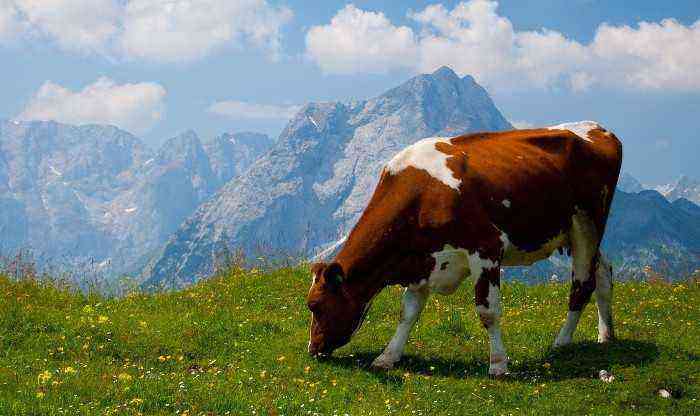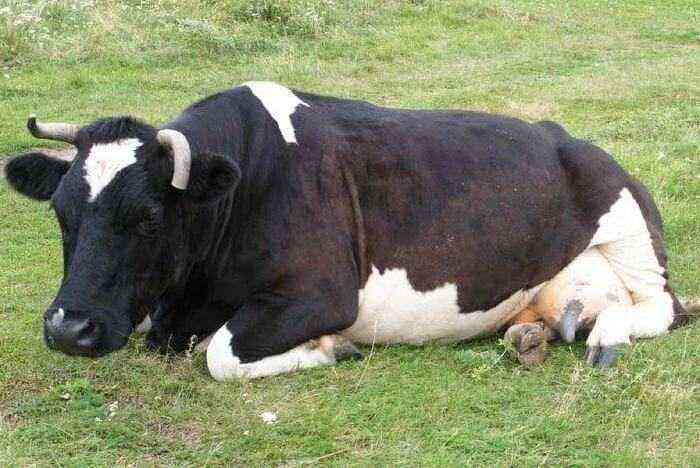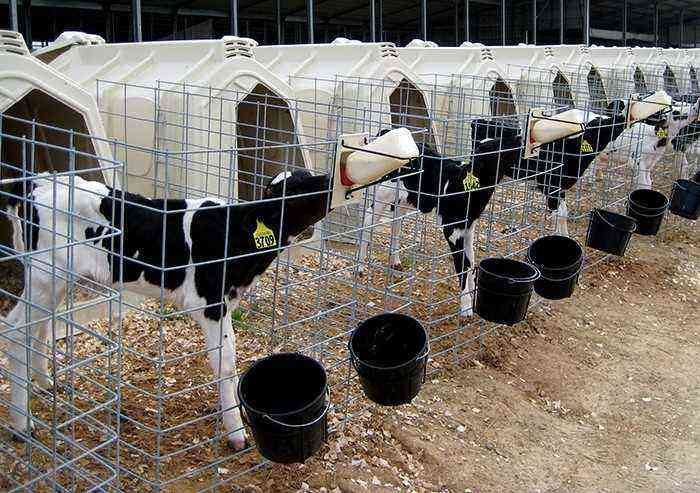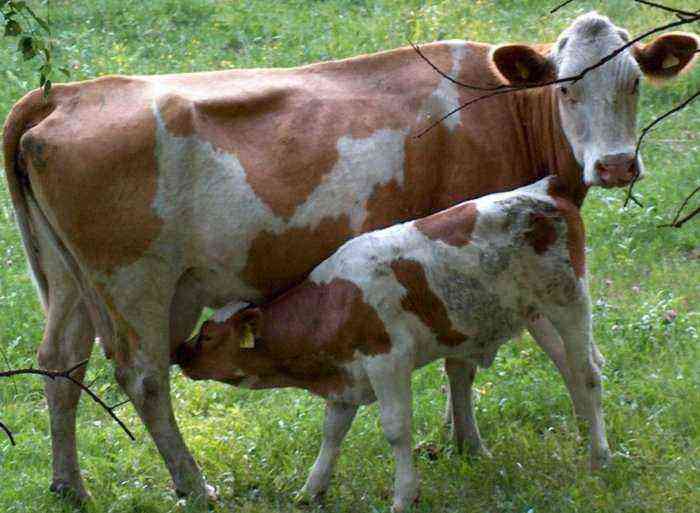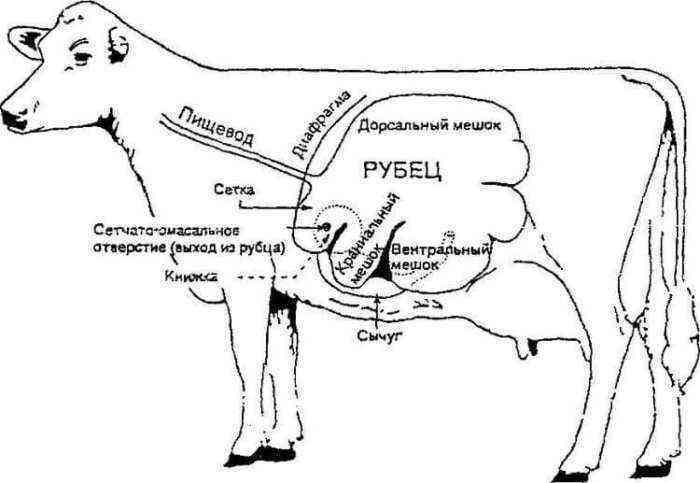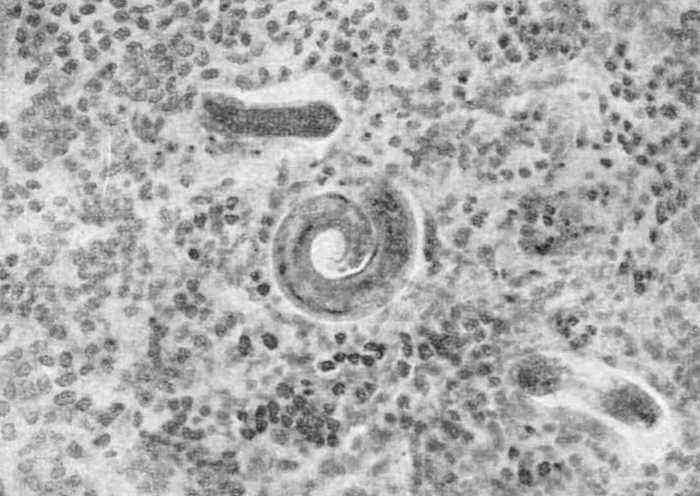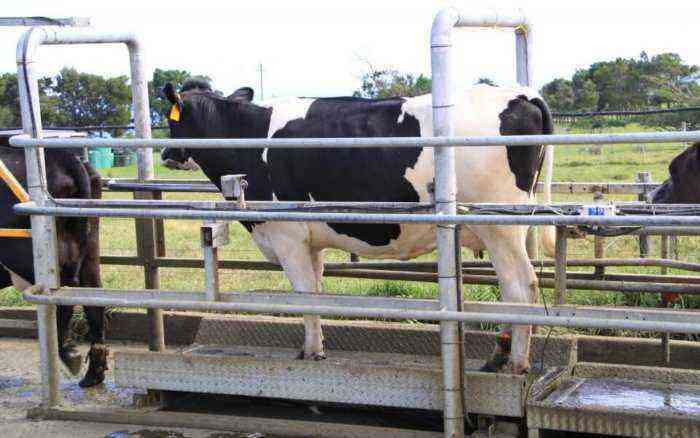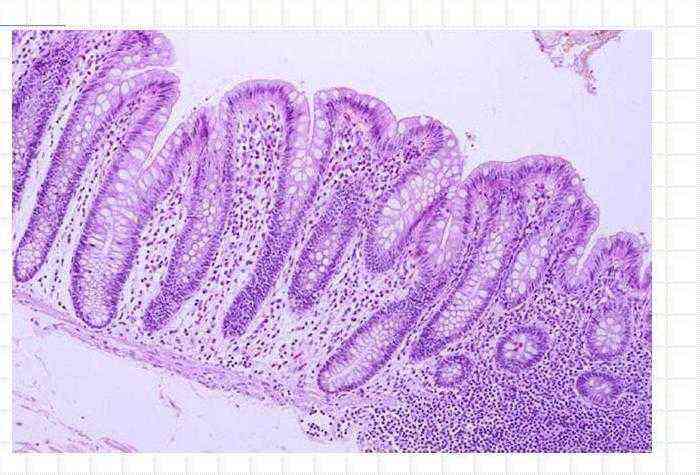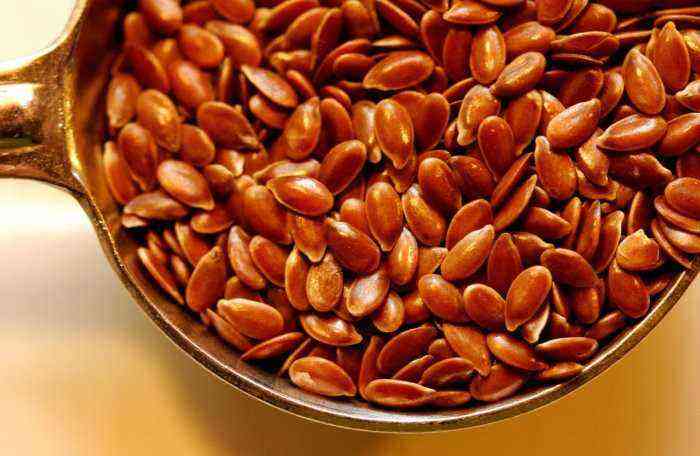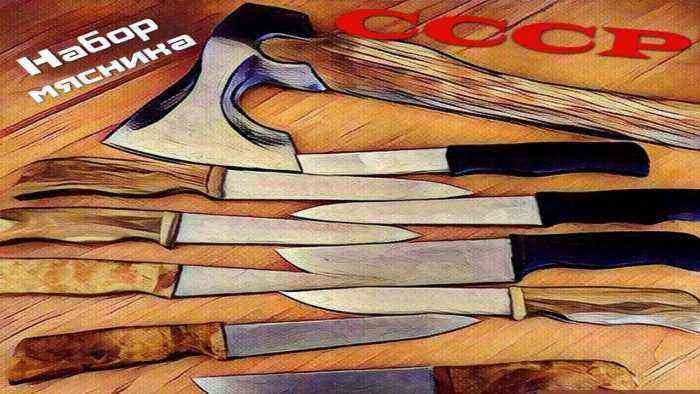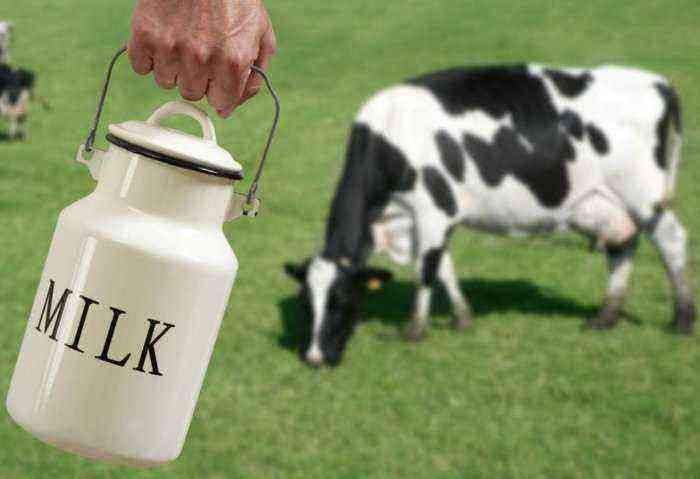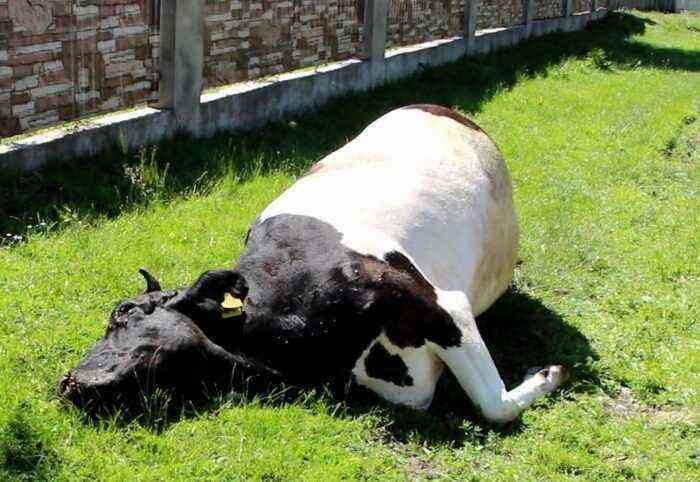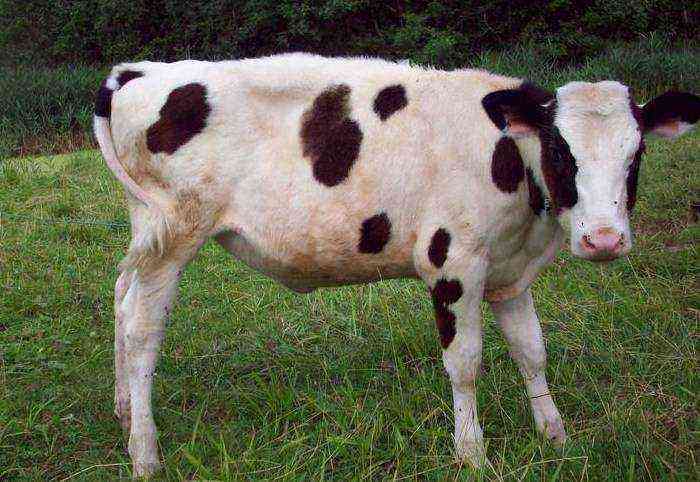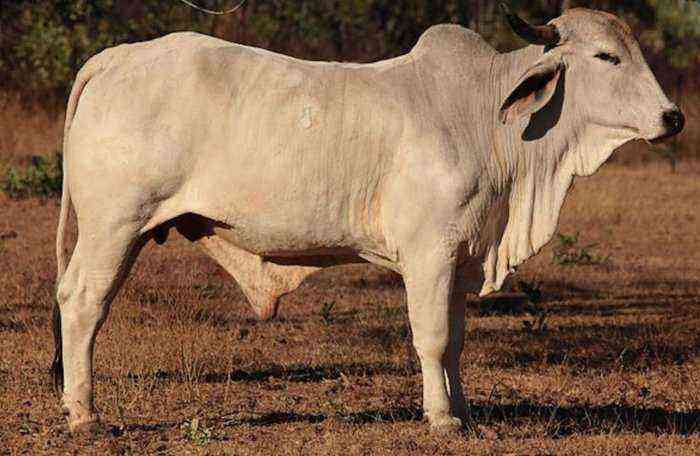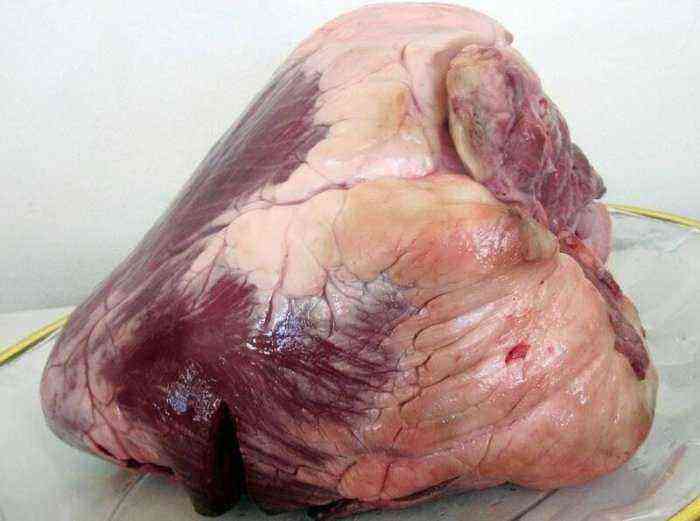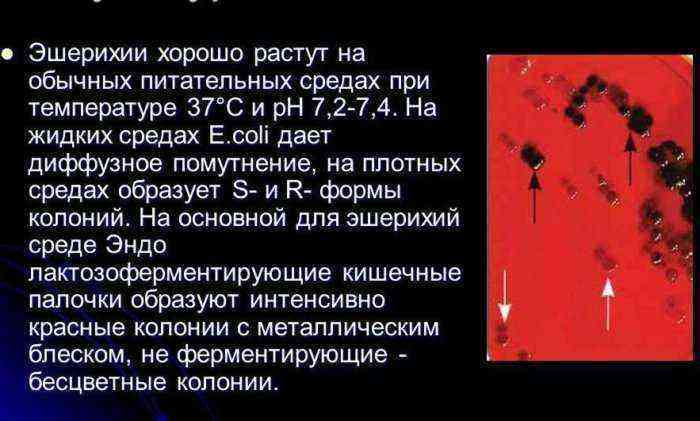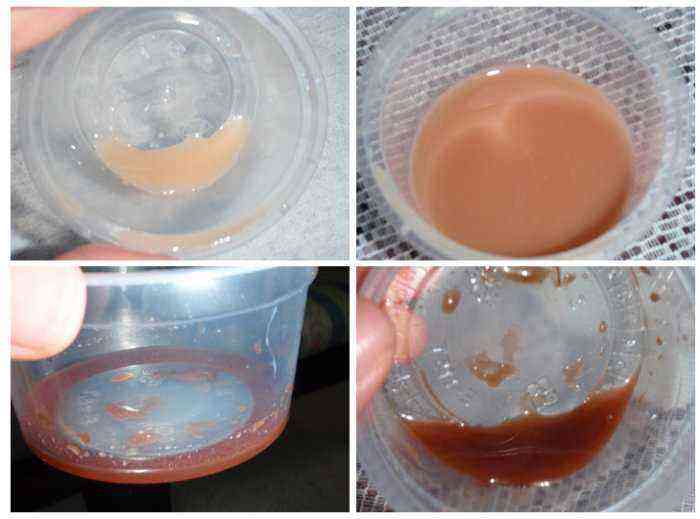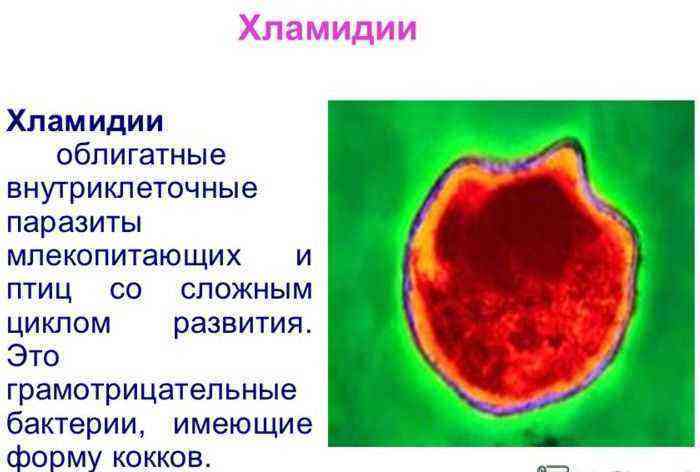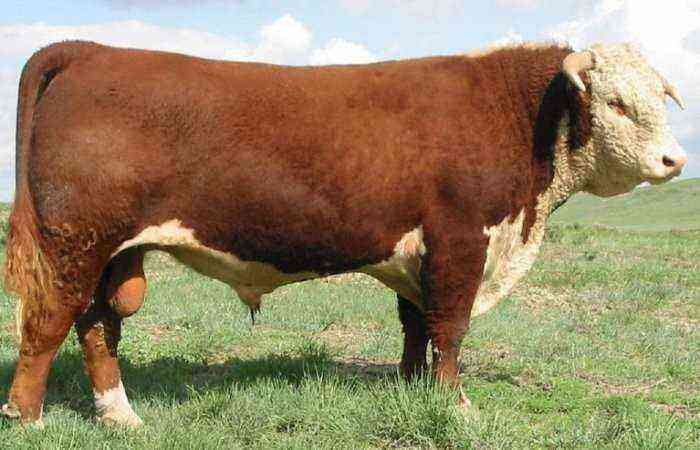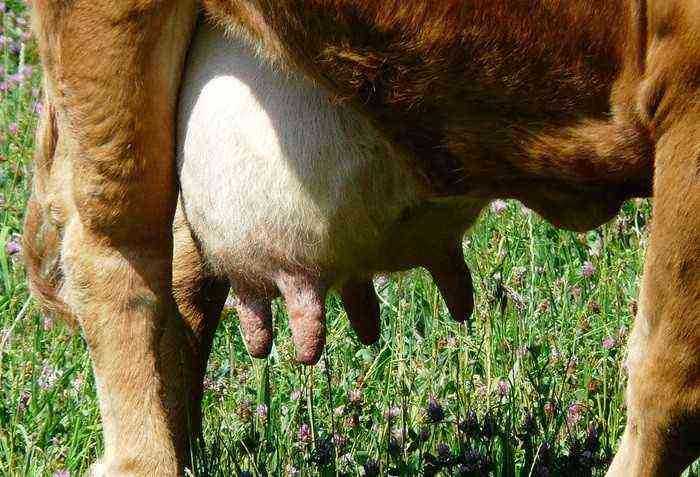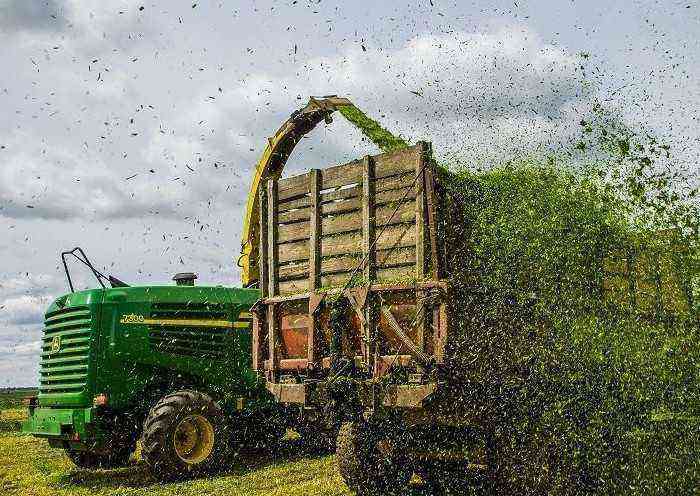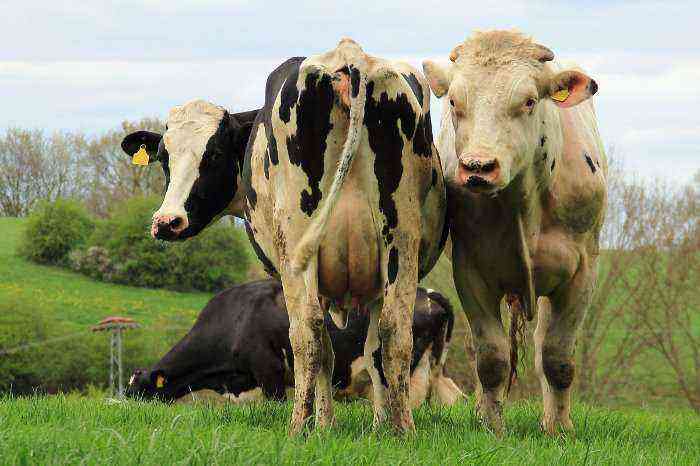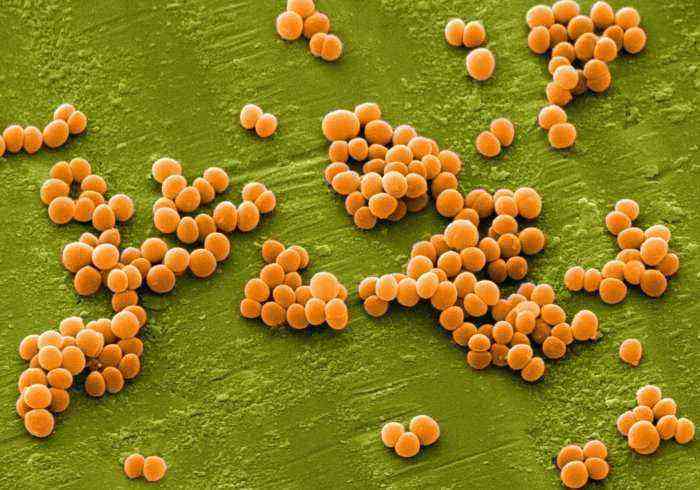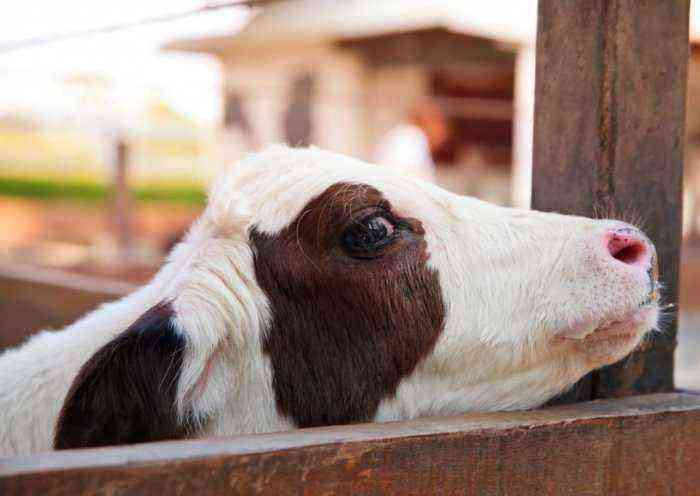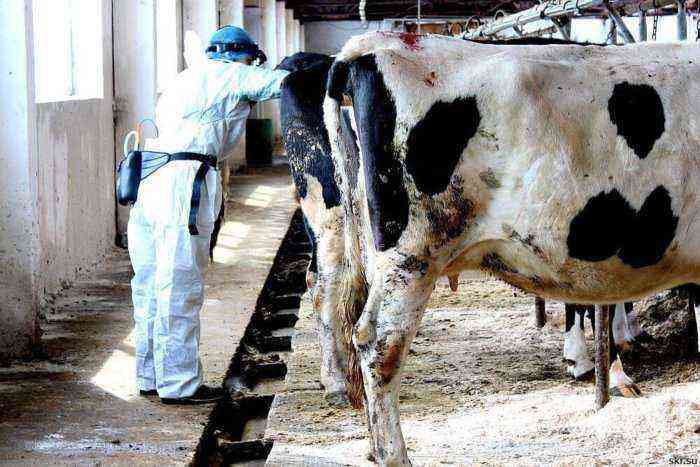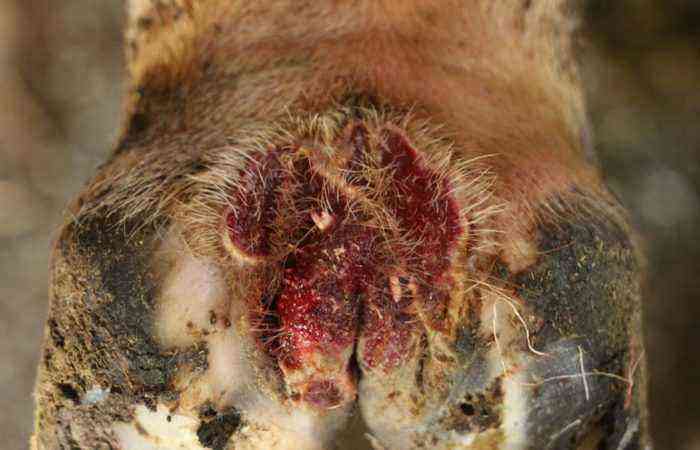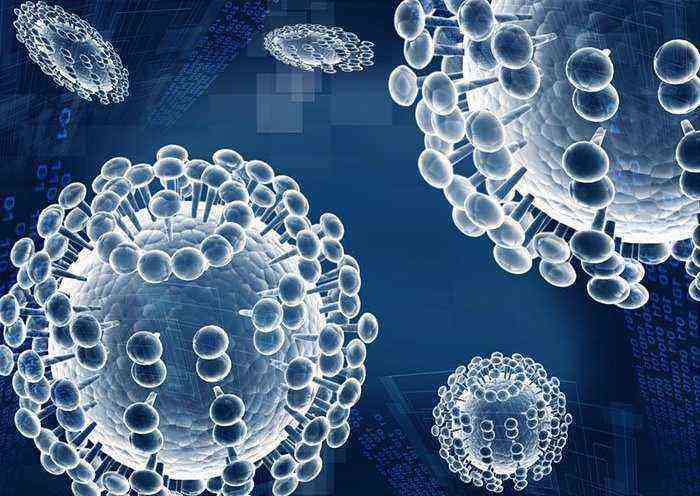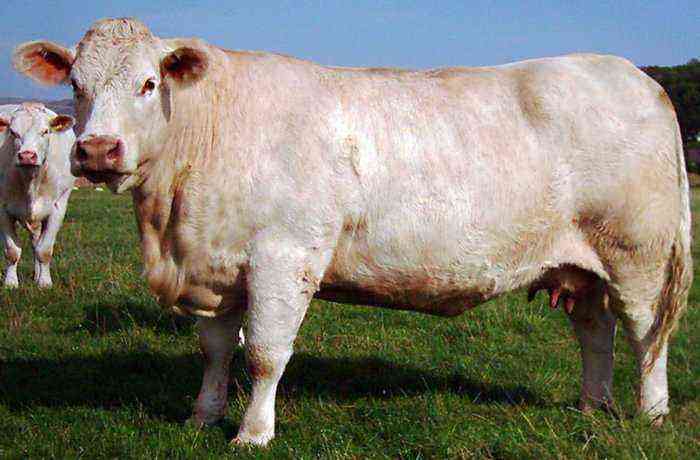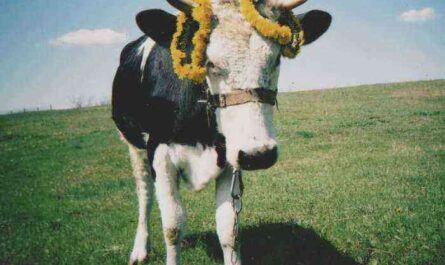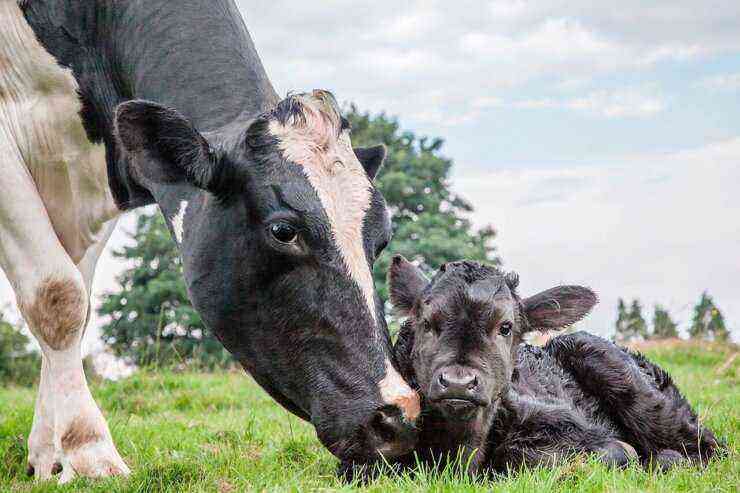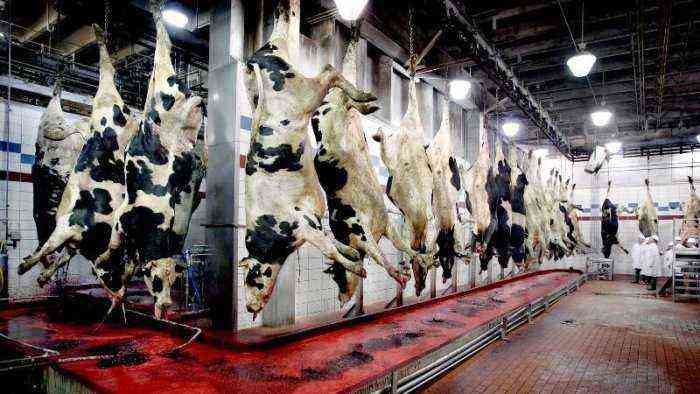Fattening cattle is associated with a number of factors. For normal development, the daily diet of a cow must include all the necessary elements and substances in full. Animals should receive drink in unlimited quantities. The choice of fattening method will depend on the purpose of breeding cows: meat or meat and dairy production. All feeds produced must be of the highest quality.
Fattening cattle
Goals and technology
Proper fattening of cattle on average during the day per cow should give from 1,2 to 1,4 kg of weight gain. With such indicators, the main goal to be achieved is the weight of a healthy individual of 16-18 months in the region of 600-700 kg.
At the moment when the calf stops receiving milk and switches to a new, coarser and more varied diet, the fattening period begins. Adaptation time usually takes 4 to 5 weeks. The calf should gradually get used to such feeds:
- corn silage;
- hay;
- concentrated nutrition.
Conventionally, the fattening time can be divided into two main stages:
- a set of 400 kg of live weight;
- set from 400 to 650 kg of live weight.
In order for the fattening of young cattle to give the desired result, the main diet should be supplemented with concentrated feed. Thus, the animals will receive protein and metabolic energy in the optimal amount.
In the early stages, more intensive nutrition is required. A cow weighing 200 kg should consume about 4,5 kg of dry matter. At the same time, for an older individual that has gained a live weight of around 600 kg, the required amount of dry matter will already be only 9,5 kg.
The diet of animals must include corn silage and high quality hay. Cows will receive significantly more dry matter than when consuming mediocre feed in the same volumes. The difference will be 1 kg.
Types of fattening cattle
There are two types of feeding:

Bull on intensive fattening
- intensive – suitable for rapid muscle building, more often used for young animals and meat individuals;
- stall – used for all species and age groups of animals, may vary in nutritional composition depending on the availability of feed and the time of year, suggests a smoother weight gain.
intensive fattening
Intensive fattening of cattle has as its goal the recruitment of muscle mass by young animals.
To gain 1 kg, young cows require smaller amounts of feed than adults. The average feed consumption for 1 kg of weight gain for calves can be from 7 to 7,5 conventional units.
Intensive fattening is usually chosen for:
- bulls related to the meat direction;
- young cows;
- calves belonging to the first calving, born from beef bulls and dairy cows.
This type of fattening is also used for meat and dairy and dairy groups. The meat of these animals also has high quality characteristics, yielding to beef cattle in terms of fat content.
The basis of the diet for intensive fattening will be corn silage with high quality characteristics.
Important! Nutrition should be supplemented with concentrated feed (an additional source of protein) and mineral supplements.
stall fattening
The stall feeding method is equally well suited for both adults and young animals. This type of fattening involves the use of the following types of feed:
- molasses and bard;
- beet pulp;
- potato pulp;
- strength.
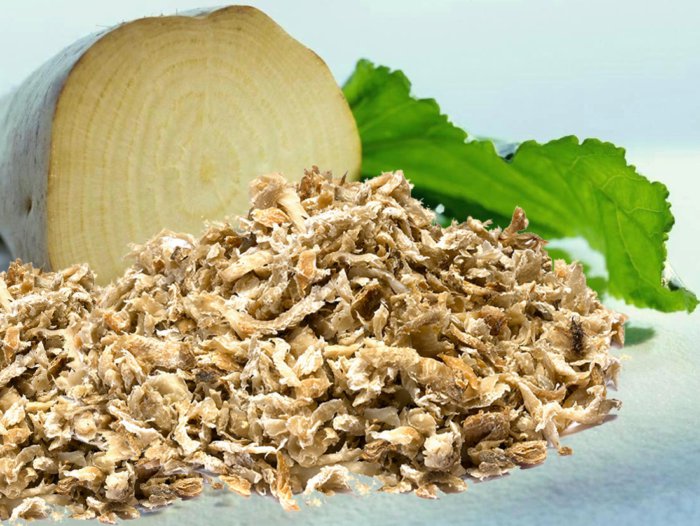
beet pulp
Young animals should also receive rough and concentrated nutrition.
Usually the process of fattening in the stall is usually divided into 3 main stages:
- initial (30 days);
- medium (40 days);
- final (20 days).
Each stage differs not only in duration, but also in the composition of the diet consumed by cows. In the first 70 days (initial and middle stages), animals can receive cheaper food. But at the final stage, the amount of concentrated feed must be increased several times.
Cows should be fed 3-4 times a day, and the transition to a new, more intensive fattening should be carried out gradually, over 7-8 days. Animals should be provided with constant access to drinking water. Its quantity cannot be limited.
The stages of fattening are also distinguished by weight gain:
- the first stage is characterized by maximum weight gain (the animal intensively increases the amount of fat, water and protein in the body);
- at the second stage, the weight gain decreases, fat deposits are formed;
- if the animal receives high-quality feed, at the third stage, the volume of weight gain will begin to grow again, and even at its peak values will be inferior to the indicators of the first stage.
The beet pulp will be an excellent solution for stall fattening cows due to the high content of calcium and carbohydrates. In this case, you should also enrich the diet with feeds rich in proteins, fats and phosphorus. Every day, animals must receive salt and bone meal to maintain an optimal amount of proteins in their bodies.
At the very beginning of fattening, the calf should receive at least 40 kg of pulp, and an adult – at least 65 kg. By the third stage, this volume usually decreases.
The stability of the digestive system will depend on the amount of roughage received by the animals. For 100 kg of live weight, there should be about 1-1,5 kg. Young animals should be given only hay. For adult cows admixture from spring straw is admissible.
If fattening is used on bard, the best option would be bread or potato. Such feeds are poor in protein content and quite watery (up to 94% water in the composition). At least 100 kg of stillage should be given per 15 kg of animal.
Hay is also an essential element of the diet. To make the cows consume it more willingly, the hay is steamed in a hot vinasse.
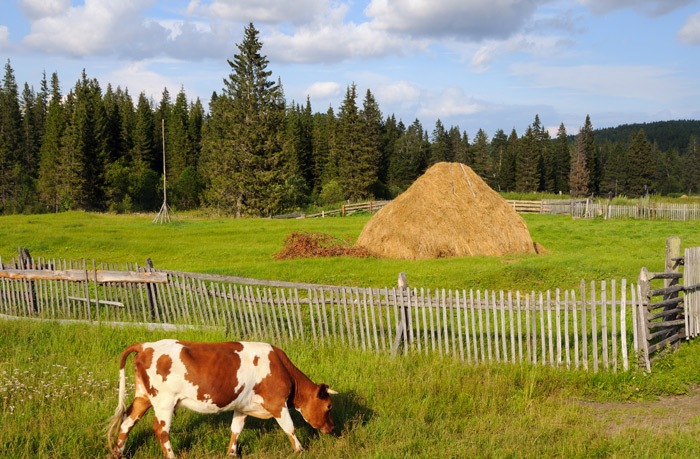
Hay for cattle
Adults should receive 7-8 kg of hay daily, and young ones – 4-6 kg. Grinding corn and barley, as well as compound feed, will be the best choice among concentrates. The animal, regardless of age, should be given from 1,5 to 2,5 kg of concentrated feed daily.
Chalk is a good mineral supplement. It provides the animal with the necessary amount of calcium. It is mixed into concentrates in the amount of 70-80 g per 100 kg of live weight.
At least 10 kg of roughage should also fall on 1 liters of stillage. Otherwise, cows may develop bardy biting.
Silage fattening is best suited for the winter period. The most common use of two types of silos:
- sunflower;
- corn.
The lack of protein is compensated by the addition of urea. One young individual should account for no more than 40-50 g. Adult cows can be given up to 80 g of the substance. Also, animals should receive hay, straw and concentrated feed, salt and chalk (40-50 g per day and 10-15 g per day).
In summer, green fodder predominates. In this case, cows consume 40-80 kg of greens and 2-2,5 kg of concentrates per day. Also a mandatory element of the diet is salt (a source of sodium).
Types of feed
There are three types of feed that must be included in the daily diet of cattle:
- the main one (it accounts for a large share of the volume of nutrition, is the basis for feeding the animal);
- concentrated (serves as a supplement to the main one, compensates for the lack of metabolic energy and essential substances)
- mineral (constitutes the minimum part in the daily diet, represents various impurities, the composition of which includes the mineral elements and vitamins necessary for the animal).
Primary
As the main feed, it is best to choose corn silage that meets the following set of requirements:
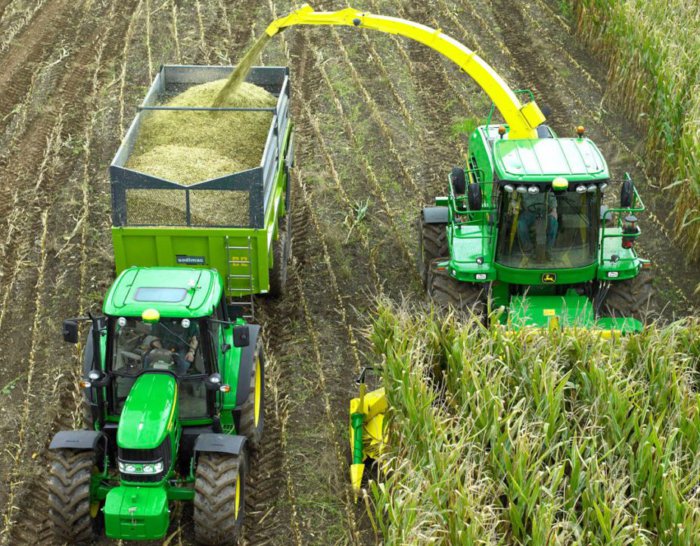
Preparation of corn silage
- the proportion of solids should fluctuate within 32-35%;
- an index of digestibility of organic compounds of at least 73% (this can be achieved by selecting the right varieties);
- 1 kg of dry matter should account for no more than 200 g of fiber and about 70-90 g of crude protein:
- the energy value of dry matter should be at least 10,5 MJ per 1 kg.
In case there are problems with the regular use of corn silage, the main feed can be replaced. As an alternative, silage obtained from whole grains is used. The energy value of food will then fall by 10-15%.
The use of grass silage is ineffective during the fattening period, as it leads to high food costs. The reason is the additional purchase of concentrates. In addition, in this case, one fattening place will, on average, bring less income, since the fattening period will become longer.
Concentrated
It is an additive that balances corn silage. Concentrated feed is an indispensable element of the diet, as it ensures that cows receive the necessary proteins in full. After all, corn silage contains an insufficient amount of crude protein. To fully provide animals with this substance, its content in compound feed should be at least 22-24%.
Important! It is also important to use concentrates that allow cows to receive additional metabolic energy.
Protein concentrated feed:
- soybean meal;
- sunflower meal;
- rapeseed meal;
- fodder varieties of legumes;
- peas.
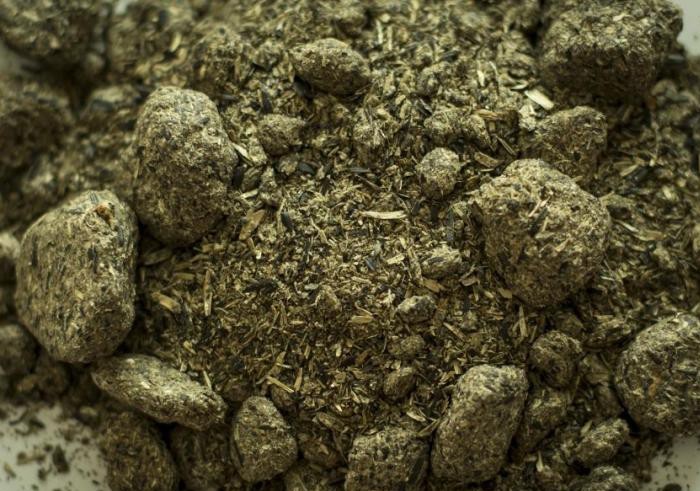
sunflower meal
Energy concentrated feed:
- wheat;
- triticale;
- corn grain;
- dry pulp;
- barley.
Only well-processed feed should be used, without excess dirt, fungus and mold.
The proportion of concentrated feed decreases when moving from the first stage of fattening to the second;
- up to 400 kg of live weight – 40% of the total dry matter;
- from 400 to 650 kg of live weight – 28-30% of the total dry matter.
Reference. On average, about 2-3 kg of concentrate should fall on one cow daily.
Mineral
Cows should receive calcium and phosphorus regularly. Their ratio in the daily diet should be equal to 2 to 1. Rock salt will be an excellent source of sodium.
Concentrated feeds are enriched with vitamins and minerals. It should account for no more than 2-3%. In some cases, the practice of distributing a premix is used. Every day one cow receives from 60 to 80 g.
Conclusion
If you want to get a healthy, prolific, and most importantly, productive livestock, you should properly plan the daily diet of your animals. Cows are quite unpretentious in food, but in case of a shortage of protein, calcium, sodium, vitamins and other necessary substances, they will slowly gain live weight. You don’t have to feed the animals. Overeating can adversely affect their health. In fattening cows, you need to know the measure, as in any other business.
